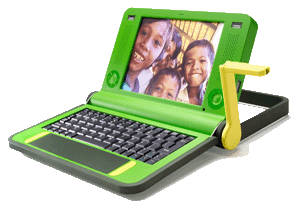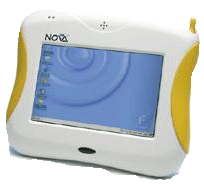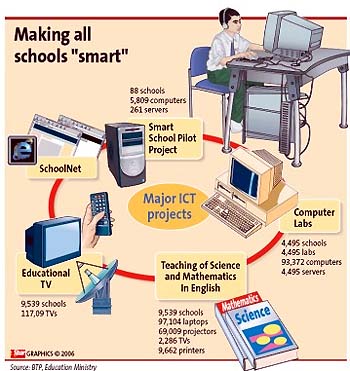Archive for the ‘Internet’ Category
eSchool News – Top 10 ed-tech stories of 2006
eSchool News recently had a two-part article on Top 10 Education Technology stories of 2006″, giving the ten most significant educational technology stories of the past year.
Original stories are at – Part 1 & Part 2
I had extracted some of them here:
Cell phones: The good, the bad, and the ugly
 Few technologies these days are as ubiquitous as the cell phone. But while parents rely on the portable devices to keep a bead on their children, and students use them to freely swap photos, music, and text messages with friends, the debate over the cell phone’s place in schools is heating up.
Few technologies these days are as ubiquitous as the cell phone. But while parents rely on the portable devices to keep a bead on their children, and students use them to freely swap photos, music, and text messages with friends, the debate over the cell phone’s place in schools is heating up.
In the classroom, some educators say the devices represent what amounts to a double-edged sword. While the growing list of interactive features–including cameras, video-capture technologies, and storage capabilities–have many educational technology advocates pushing schools to embrace the cell phone as a potentially powerful classroom learning device, resisters argue that cell phones represent a distraction and a potentially dangerous security risk that, if not held in check, could spell trouble for schools.
In a recent survey conducted by the Associated Press, America Online, and the Pew Internet and American Life Project, young adults indicated that they used their cell phones as mini-PCs. Not only do the devices make and receive phone calls, they said, but they also serve to store information, run basic computing applications, and swap music files, ring tones, pictures, and movies. Some educators said the results were encouraging and pointed to how cell phones could be used in the classroom to influence learning. In some schools, they already are: Boston University earlier this year reportedly became the first to introduce a class on using cell phones as video-production tools, and other colleges and universities are replacing telephone landlines with cellular services for students that include educational content.
But just as the survey shed light on the potential for cell phones in education, other, more troubling developments have served to mute that enthusiasm. For example, in one recent story, eSchool News reported on how students were using a high-pitched noise that only they can hear as a cell phone ring tone that is undetectable to most teachers. There also have been reports of students using cell phones to cheat on tests, take compromising pictures of classmates in school locker rooms, and socializing with friends– instead of learning–during the school day.
As the debate over cell phones in schools has evolved, so, too, have the policies intended to govern the use of such devices in schools. While some parents–anxious to have a method of reaching their child in the event of an emergency during the school day–have argued that policies barring cell phones from schools are out of touch with reality, several districts, including the New York City Public Schools, have taken steps to ban cell phones entirely for the risks they pose. In New York, parents have filed a lawsuit challenging the city’s policy.
One-to-one computing: Promising solution–or overhyped mistake?
One-to-one computing is another issue that continues to spark discussion–and debate–in education circles, particularly as developments in technology offer a range of new choices for schools.

Buoyed by the arrival of former MIT Media Lab Director Nicholas Negroponte’s $100 laptop–a low-cost, Linux-based machine designed to bring the power of educational technology to students in developing nations–advocates of one-to-one computing in schools contend that an emerging crop of affordable laptop alternatives are making the promise of one-to-one computing a fiscal reality for schools.
Earlier this year, Intel Corp. announced its own alternative to the $100 laptop, a $400 machine called Eduwise that, unlike Negroponte’s device, will be marketed immediately to U.S. schools.

In addition, Fourier Systems has introduced a new one-to-one computing device that  aims to “bridge the gap between the cost-prohibitive laptop and the less functional handheld device.” Weighing 2.2 pounds, the company’s Nova5000 is a Windows CE 5.0 tablet computing device that aims to meet students’ everyday computing needs, including internet access, word processing, spreadsheets, and eMail–starting at $419.
aims to “bridge the gap between the cost-prohibitive laptop and the less functional handheld device.” Weighing 2.2 pounds, the company’s Nova5000 is a Windows CE 5.0 tablet computing device that aims to meet students’ everyday computing needs, including internet access, word processing, spreadsheets, and eMail–starting at $419.
What’s more, a company called nComputing claims it can supply a one-to-one computing solution for schools for less than $100 per student, by fueling the computing needs of up to seven users off the processing power of a single machine.
Despite many new options that are driving down the cost of one-to-one computing, some parents and educators say there are still few measurable indicators to justify a large-scale, system-wide deployment, at least at current prices.
Though scaled-down alternatives might be appropriate for some learning environments, fully functional laptops remain cost-prohibitive in most school districts. Even for schools that can afford them, the question remains whether the price of the machines is too high for schools to optimize their investment.
As schools continue to demand more out of their technology purchases, the conversation about one-to-one learning in schools seems certain to continue in the New Year. The original site have many key stories they published on the topic in 2006.
7. 21st-century learning environments: Building schools of the future
As educators search for ways to prepare today’s students for the challenges of tomorrow’s workforce, school districts nationwide are doing more than simply changing the policies that govern how teachers teach; many are redesigning the traditional classroom altogether, building special learning environments–and even whole schools–designed to better prepare students for success in a global, knowledge-based economy.

In Philadelphia earlier this year, students and administrators celebrated the opening of the School of the Future. A joint venture between software giant Microsoft Corp. and the school district, the $63 million building–equipped with everything from wireless laptops and electronic whiteboards to energy-efficient windows and customizable furniture for project-based learning environments–was touted as a cost-effective model that other schools around the nation could emulate as they sought to redesign today’s high schools for the 21st century.
Philadelphia isn’t the only place where architecture and philosophy have come together to redefine the notion of the typical American schoolhouse. Across the country, design firms have been working closely with educators to reconfigure traditional learning environments to reflect the needs of 21st-century learners.

And the movement toward redesigning education for the 21st century got a huge boost last summer, when billionaire investor Warren Buffet announced a contribution to the Bill and Melinda Gates Foundation, a strong supporter of the concept, totaling about $1.5 billion a year.
6. Social-networking web sites challenge policy makers

The growth of social-networking web sites such as MySpace.com, the popular online community that connects millions of users with friends around the world by enabling users to post their personal profiles online, continued to confound school leaders and state and federal policy makers in 2006. Though the sites present an opportunity for peer collaboration and cross-cultural exchanges among students, they also have become trolling places for online predators and hotspots for cyber-bullying.
According to a recent survey conducted by the National School Boards Association, only 35 percent of the educators, administrators, and school board members who attended the group’s Technology + Learning Conference in November said their districts had policies to address the use of social-networking sites by their students. Fifty percent of respondents said their districts had no such policies, and 15 percent weren’t sure.
School leaders aren’t the only ones struggling with how to protect students who use social-networking web sites. Members of Congress introduced a bill that would ban the use of MySpace and other such sites in schools and public places, prompting outrage from some educators who believed the bill went too far. MySpace itself has taken steps to enhance security, though critics of the measures question whether they will be effective.
Despite the challenges these sites pose for schools, proponents of online social networking say the sites, when used effectively, can be educationally beneficial.
5. Online learning comes of age, multiplying the opportunities available to students and teachers.
The past year saw an explosion in online learning programs for teachers and students, continuing a trend that some experts predicted would begin to level off.
Instead, according to a report from the North American Council for Online Learning, enrollment in K-12 online classes grew by more than 50 percent in some states–and at least 38 states now feature either state-led online learning programs, policies regulating online education, or both. In higher education, the story was the same: According to the Sloan Consortium, which tracks online enrollment figures at higher-education institutions annually, online enrollment was up 40 percent over the previous year.

Educators say the trend is fueled by several factors. In some states, schools are using online learning as a way to reach out to students who are sick or cannot attend neighborhood schools. (To facilitate this, the nonprofit Virtual High School launched a pilot program earlier this year that is offering virtual-school seats at no cost to three children’s hospitals–and the group hopes to expand the program to other hospitals nationwide.) In other places, virtual-school programs provide an alternative for students whose needs aren’t being met by a traditional education. (At Stanford, educators have developed an online high school for gifted and talented students interested in taking more advanced, college-level courses. And in Mississippi, to curb a high school dropout rate that is among the highest in the country, state education officials are proposing a self-paced, online curriculum as one solution.)
Earlier this year, Michigan became the first state in the nation to make virtual learning a requirement for high school graduation. And as online learning has exploded in popularity, at least two groups–the Southern Regional Education Board and the National Education Association–have released standards defining excellence in online teaching.

One recent development that will help push online learning to even further heights is the Sharable Content Object Reference Model, or SCORM, an emerging set of standards designed to promote interoperability, accessibility, and reusability of online learning materials. Proponents say the specifications should help schools integrate any SCORM-compliant digital content into their existing learning management systems (LMS), regardless of manufacturer.
The emergence of SCORM is making innovative experiments like the one in California possible, where a new program under way in select elementary schools has history teachers scrapping traditional textbooks in favor of digital learning materials. But despite this progress, an ongoing patent dispute between leading online LMS provider Blackboard Inc. and its competitors threatens to cast a cloud over the LMS market.
4. Video goes ‘viral,’ expanding the reach of college lectures–and turning ordinary students into internet celebrities.

Last year it was MySpace that exploded onto the internet scene, forever changing the nature of the web. This year, it was the video-sharing web site YouTube. Providing users with the ability to upload and share their own videos easily online netted YouTube’s creators $1.6 billion when the site was purchased by Google Inc. earlier this year–and it has made internet celebrities out of countless teens armed only with video cameras and a little imagination. As author and inventor Ray Kurzweil noted at the National School Boards Association’s annual Technology + Learning Conference in November, this kind of technology “is very empowering; it’s very democratizing.”
YouTube was merely the most high-profile example of a trend that really flourished in 2006: the rise in online video, which has had enormous implications for schools. Besides helping students become creators and publishers of their work, the emergence of YouTube, Google Video, and other online video-sharing services has given schools a wide array of new tools to help them connect with today’s crop of media-savvy learners.
Looking to include the use of video more in the learning process, innovative educators in Missouri recently launched a new online television network that delivers educational content via IP-TV. Many schools, and now even some entire conferences, have begun streaming football games and other sporting events on their web sites, eliminating barriers such as cable or satellite TV availability or advertising support. And the development of the video iPod has opened new doors for schools to make video recordings of lectures and other content available to students for downloading and watching at their leisure.
For instance, at the University of California, Berkeley, students and others all over the world now can access a special account through Apple’s iTunes U, where they can download webcasts of lectures and other events on campus to their desktop, laptop, or portable iPod. Many colleges and universities also have tapped video as a way of reaching out to prospective students, using online tours and other video resources as a recruiting tool to lure students who otherwise might not be able to visit the campus in person.
Even eSchool News has seized upon the online video trend. Earlier this year, eSN launched TechWatch, a free monthly video news program that reports on ed-tech news from around the nation. The program is available via streaming video online–but it’s also available in other digital formats for school systems to broadcast over their local cable channels.
3. Education 2.0 has arrived: The emergence of web-based services and other open technology alternatives is changing the nature of school software.
Hoping to lure teachers and students, thus capturing the attention of a whole new generation of users, Google–the world’s largest internet company–this year launched an online portal for educators, complete with lesson plans and other resources designed to help educators use the company’s free online tools (such as Google Docs and Spreadsheets, an open alternative to Microsoft’s Word and Excel) in their classes. The site also contains resources for using Google Maps in education, and Google last month ran an online project encouraging students from around the globe to brainstorm ways to slow or stop global warming–using the company’s software to collaborate.
Google is perhaps the largest, but it’s by no means the only, example of how the emergence of free, or low-cost, web-based services and software is changing the nature of school computing. For years, schools have been using web-based software for their data systems, administrative systems, and even their curriculum software–and students and teachers have used web-based eMail accounts. But now, even applications that traditionally have been tethered to a desktop computer, such as productivity tools–spreadsheets, word processors, and the like–can be accessed entirely online. And many of these tools are available to use or license free of charge.
Besides the obvious bottom-line benefit these open technology alternatives to costly proprietary software offer, educators say the services also enable them to customize their digital learning environments more easily–providing a host of resources designed to meet the needs of teachers and students, regardless of platform. Web-based tools also allow users to collaborate on the same documents from different locations. But there are some challenges, too: Using web-based software requires a constant and reliable internet connection, for instance–and some people also are concerned about the privacy of information held in sign-in accounts stored on company servers.
The Star – ICT education still lacking in schools

THANKS for highlighting the use of ICT in two model schools SMK Sri Permata and SMK Dindings (StarEducation, Nov 5). ICT is here to stay.
Yet, the poor reinforcement of ICT learning in many urban schools today is both appalling and disturbing.
It has been seven years since the implementation of the Education Ministry’s Smart School project, with 4,500 schools equipped with computer labs.
Yet many students are not getting the benefit of ICT education in schools. Ironically, many students learn more about the Internet in cybercafés than in their schools.
My son is now in Form Two in an urban school and there is no ICT syllabus in his studies. His school has no computer lab while most of the teachers have school-provided laptops.
Very few of the teachers use computer software for teaching, yet many projects and assignments are given to students that require computer applications. Isn’t it likely that students will have to go to cybercafés to complete their assignments?
Needless to say, exposing students to the Internet reaps a wealth of benefits. Some of the benefits are:
Firstly, the principal must be a far-sighted leader to realise the importance of ICT education.
Secondly, computer labs must be made easily accessible to students who should be given free time to log onto the Internet for purposes other than doing school assignment. To create the ICT culture, students must be encouraged to use the computers.
On the flip side, teachers must also be given computer software and Internet training to keep abreast with ICT knowledge.
Thirdly, the school must have PTA support as well as the benefit of the Education Ministry’s training in handling hardware and software. Only a committed partnership will ensure the success of ICT use in schools.
I fully agree with Chua of SMK Sri Permata that the school computer lab is a safer place than the cybercafé. It is a way to help solve social problems among teenagers.
Fourthly, use students to take charge of computer labs. This will help reduce the teachers’ workload and make the students feel a sense of achievement. This can be done by setting school rules to guide the students on computer use.
School principals should wake up and start to integrate the use of ICT into their school activities for the sake of the students.
Original Story Link – http://thestar.com.my/education/story.asp?file=/2006/11/12/education/15941321
TUAMKC,Selangor
The Star – More schools open up to ICT
 BY HARIATI AZIZAN
BY HARIATI AZIZAN
SEVEN years after the Education Ministry introduced the Smart School computer programme project at 88 schools, a total of 4,495 more are now equipped with computer labs, in line with the ministry’s Making Schools Smart programme.
An evolution of the pilot smart school project, the Making Schools Smart programme is built on the various ICT initiatives from the smart school project to educational television broadcast service (see chart) 
However, according to the ministry’s Educational Technology Division (BTP) director Datuk Yusoff Harun, contrary to common belief, the Malaysian smart school is not one that is solely ICT rich but rather one that optimises ICT and other educational technology to help students learn effectively.
Early this year, 10 pilot schools in the Kalabakan area of Sabah were equipped with Internet-ready “Access Centres.†to give students and teachers more ICT exposure.
The success of this programme has led to the setting up of Access Centres in 74 other primary and secondary schools in the rural areas of Sabah and Johor.
The Access Centres are similar to cybercafes but they focus on learning and enabling students to work on their assignments.
This is different from the existing computer labs, which are used to conduct lessons for certain subjects and will be housed in a separate room.
Recently, Education Minister Datuk Seri Hishammuddin Tun Hussein announced that up to 1,500 schools will be equipped with the Access Centres.
The implementation, which costs more than RM70mil, is the first phase of the project and will see the 1,500 schools receiving 15,000 personal computers, 1,500 printers as well as the necessary furniture.
Next year, another 1,290 schools will receive 10 computers each.
With the Access Centres, the ratio of computers to students would be reduced, allowing students more ICT access.
Access Centres could even be opened to the community as its local ICT centre.It is also hoped that the number of students frequenting cybercafes will be reduced when the Internet service in schools functions properly.
To assist schools manage their ICT facilities, the ministry is drawing up guidelines.
To ensure security, different insurance schemes for the computer labs are being studied.
The ministry has also promised that the schools without basic amenities would have power and water supply by 2010, and would have their generator sets upgraded during the interim period.
Original Story Link –
http://thestar.com.my/education/story.asp?file=/2006/11/5/education/15895598
The Star – Not for schoolwork only

Not for schoolwork only By HARIATI AZIZAN LUIIS is CENTRE of ATTENTION – Male, 18-years-old, from down south, Texas, United States pops up on the big screen in the front of the computer lab of SMK Sri Permata in Petaling Jaya, Selangor.
“That is mine,†exclaims Amir (not his real name) pointing to the big screen.

Chua (right) with her hardworking ICT team (from left) Koh Chin Kiang Ramani Kuppusamy, Abdullah Sani Deraman and Chin Siew Yin.
His monitor screen has been flashed on the large screen for all to see but instead of quickly clicking off, he simply continues to browse the other profiles on MySpace.
Like most teens around the world, Amir is caught up in the MySpace craze. He spends at least 20 minutes a day visiting the social networking website to see if he has made any new friends. Unlike most teens though, Amir does all this in school.
The latest football results pop up on the big screen next which soon morphed into a “world†from the webgame Utopia.
It is recess time at Sri Permata and the computer lab at the school is full of Form One and Form Two students checking emails, chatting online, playing games or just surfing the internet.
While most schools keep their computer facilities secure under locks, at Sri Permata, the school computer lab is an open avenue for students to hone their information and communication technology (ICT) skills.
Making IT accessible
According to the Education Ministry’s Educational Technology Division (BTP) the effectiveness of the ministry’s programmes in making teachers and students ICT savvy depends not only on how well the school is equipped but also the extent of usage of the infrastructure provided.
As reported recently, apart from schools without electricity supply in rural areas, all others have been installed with ICT infrastructure. The usage, however, is still below the ministry’s target.
According to World Bank standards, any facility should have 70% utilisation to be effective, says BTP director Datuk Yusoff Harun.
He says his division has received reports that many schools restrict computer usage due to various problems such as teacher shortage, lack of technical support and funding for maintenance.
They have received reports of schools keeping their labs locked all the time, he adds, and BTP’s job is to investigate and ensure that they provide more access to students and teachers, in line with the ministry’s Making Schools Smart programme.
This programme is aimed at creating an ICT culture in school where all students and teachers use ICT in their learning and teaching respectively.
“We have been tasked to monitor and collect data of computer usage in schools. Based on the data, we categorise the schools into grades – A to E – depending on the percentage of usage.
“For example, to be in Grade A, all teachers in the school need to use the computer in all their lessons while schools that have ICT facilities but are not using it at all (have a 0% usage) will be graded E,†he adds.
At Sri Permata, the computer lab is a popular hangout. Opened during school hours, recess time is its peak period, and the computer lab is often so full that students have to be turned away.
In fact, the computer lab is so popular among students that even students from the morning session are staying back after school to use the computers to finish their homework or surf the Internet.
Students are charged a fee of RM1.50 an hour to surf the Internet.
To help maintain the computer lab, the school charges students a minimum annual fee of RM70.
“The fees are used to pay for software licences, files, printing materials, diskettes, the Internet connection as well as lab maintenance,†says Chua Siwe Geck, the teacher in charge of the school’s ICT programme Komputer Dalam Pendidikan (KDP).
“Our students know we are monitoring what they are doing online and that we check on them all the time, so they do not misuse the computer,†she says.
Using an LCD system, the screens from students’ PC are randomly flashed in front of the class for 10 seconds.
This, stresses Chua, keeps the students in check.
“We don’t want to enforce a schoolwork only rule on the students when they use the computer because they need to take a break from class work sometimes and by using the computer they get to apply their IT skills,†adds Chua.
Interestingly, Internet games are allowed for students.
“I think we should not control the child because sometimes we adults also love to play games.
“The school enforces certain rules such as no visiting of pornographic or violent websites,†says Chua.
Students are asked to sign an agreement letter to abide by the rules.
“It’s like a Surat Akujanji and so far we have not had any problems,†she explains.
The right support
While most schools had to rely on donations from corporations in the IT industry or handouts from the Government, Sri Permata has its proactive Parent-Teacher Association (PTA) to thank for its computer programme.
The PTA sponsored RM80,000 to set up the computer lab in 2000.
As soon as the computer lab was ready, the school started its computer literacy classes for its Forms One and Two students.
Access to Internet has further honed their research, and information management skills.
Six years on, the computer programme is running independently. The hardware is upgraded every two years and for security, the computer lab is wired with an alarm.
However, says Chua, theft or robbery is the last thing she needs to worry about.
She attributes the smooth running of the computer programme to the teachers in her team working in the school computer lab.
“There are four teachers and one non-teaching staff. The teachers sacrifice their free time and recess time to make sure the students have the best at the computer lab,†she says.
There are now 40 PCs but the school hopes to set up a proper cybercafé in the school soon so that students can get more access to the Internet. Now, the computer lab is also used for the school’s IT classes and for other subjects.
“We have the room, but we need to raise more money to get the room ready,†she says.
A safe platform
Still, with all the access to Internet in school, Chua admits that students still go out to cybercafes to go online, as not all the students have Internet access at home.
“I’d say only about 50% of the students have Internet access at home.†She adds that she avoids giving them too much work using the computer or Internet because she is afraid they will use that as an excuse to go to the cybercafe.
“They will tell their parents that the teacher has given them work and they have to go to the cybercafe to finish it.
“We tried to open on weekends but there were many constraints.
“We are also afraid that if we open, students may tell parents that they are coming to school but then they go somewhere else,†she opines.
She believes most parents are not aware of what their children are up to on the net simply because they are not as savvy.
“Sometimes I joke about holding a workshop for parents. You should see how many start panicking – ‘No! don’t teacher – they’ll shout’,†she says with a laugh. Chua fully supports the government’s plans to curb cybercafes. She says she is aware that sometimes even those who have Internet connection at home prefer to go to cybercafes to get more freedom online, away from their parents’ eagle eyes.
That is why they hope to get their cybercafé hooked up soon, she says. “At least in school, they are monitored.â€
Original Story Link –
http://thestar.com.my/education/story.asp?file=/2006/11/5/education/15863552
eSchool News – For some educators, tagging is ‘it’
New way to find and store information online has implications for schools
A new way of searching the web that has emerged in the last year or so makes it easier than ever to find, store, and share information online. Supporters of the method, known as “tagging,” say it could have broad implications for educators looking to direct students quickly and easily to more relevant information on the internet.
February 20, 2006—A new method of searching the internet aims to transform the way people look for and store the information they find online–and already it’s having a significant impact on teaching and learning in some schools.
The method, dubbed “tagging,” addresses a common complaint of many internet users that searching for information often is clumsy and inefficient. Web surfers often must sift through multiple pages of search results to find what they are looking for. And retrieving the best sites a second time usually means redoing the search or trolling through an unorganized list of sites that you have haphazardly saved in a “favorites” folder.
Tagging, however, can cut through the online clutter to deliver more relevant bits of information. That’s because many versions allow users to search only those sites that other people already have deemed useful. It also makes it easier to find desired information again.
Supporters of the trend say the process could have broad implications for educators looking to direct students quickly and easily to more relevant educational content online.
“With the challenges presented to teachers in creating previewed lists of sites containing authentic information, a tagging tool is one more option for teachers to consider as they distribute site lists to students,” said Jim Hirsch, assistant superintendent for technology at the Plano Independent School District in Texas.
Tagging services have multiple uses. First, they allow web surfers to save hundreds (or even thousands) of favorite web pages under key words. The technology is named after the keyword “tags” that users associate with each page they want to save. (For example, a web page featuring information about Abraham Lincoln could be saved under the tag, “Lincoln.”) For individual users, tagging makes their own favorite pages easy to search and retrieve. Unlike storing addresses in a “favorites” folder on your computer, tagged pages are stored on the web and are accessible from any computer. A tagging site also lets you search among all your stored pages by keyword, eliminating the need to scroll through dozens of sites and remember the order in which your links are saved.
Educators say the greatest benefit of tagging, and the reason many large internet companies now are adopting it, is that tagging sites often allow users to make their list of tags and sites available to (and searchable by) either a closed community of individuals– such as friends and family, or the students of Mrs. Jones’s eighth-grade English class–or all other web surfers. So, instead of searching the entire web, users can limit their forays to an edited universe of pages others already have tagged as interesting or helpful. Also, many tagging services include the kind of social-networking features that have made sites such as MySpace.com and Friendster so popular: Users can post comments or vote on the usefulness of sites that others have tagged.
While tech-heads have been using the method for the past year or so, tagging is now moving into the mainstream. Silicon Valley heavyweights, along with a number of new upstarts, are now putting major resources into developing tagging services.
In December, Yahoo Inc. bought the popular tagging site Del.icio.us (pronounced “delicious”). Now, the Sunnyvale, Calif., company says it plans to allow Del.icio.us users to access their tagged links through My Web 2.0, Yahoo’s own tagging site.
One new site, Shadows.com, allows individuals to save their favorite web sites under keywords that others also can search. The site, launched last October by the co-founders of Pluck Corp., based in Austin, Texas, attracts more than 275,000 unique monthly visitors, according to comScore Networks.
Yahoo’s Flickr.com, which allows anyone to upload photos from their camera phone or computer to the web and then store them in a digital album that others can search by keyword tags, is another early tagging success.
There are two main ways to tag a web site. Del.icio.us, for instance, will ask you to enter the web address of the site you want to save into a field on its page and to click “save.” But Del.icio.us, along with many others, also allows you download a toolbar to your desktop. While web surfing, you can add pages to your account simply by clicking on the toolbar.
Tagging could have significant implications for educators, both as a time-saving strategy and a way to find and share relevant information with students more easily.
“Let’s say you wanted the students in your geometry class to take pictures of things in their community that illustrate different concepts, like ‘acute angle’ or ‘hemisphere,’ and there isn’t any simple way for you to upload and organize these [photos] on a server hosted by your school,” said Tom Hoffman, a former teacher and technology coordinator who now manages an open-source software project called SchoolTool. “You could have the students create free accounts on Flickr and upload their photos to the Flickr server. They could then tag the photos with the name of the concept they illustrate, and you could view them by going to Flickr and searching for ‘hemisphere.'”
Hoffman added, “Of course, for some of these, other people will have already used the tag, especially for ‘circle,’ for example. To avoid this problem, you might have the students add a prefix to the tag, like ‘mrh-circle,’ so that only the class’s photos will show up with those tags.”
Tim Wilson, technology integration specialist for the Hopkins Independent School District #270 in Hopkins, Minn., said he would be giving a class on tagging to a group of teachers in his district soon. “I can think of several useful ways that tagging could be used by teachers,” said Wilson, who, like Hoffman, contributes a blog on education technology to the Ed-Tech Insiders page at eSchool News Online.
For instance, “teachers can use Del.icio.us to get information to their students on particular topics,” Wilson said. “Let’s say a teacher has geography and government classes. He could tag web sites and online articles related to his curriculum (e.g., ‘geography’ and ‘government’), and his students could subscribe to RSS feeds of those tags. Then the students could get notified about the articles automatically.”
Another example: “I use Creative Commons-licensed Flickr photos frequently for my presentations,” he said. “Thanks to the tags that users assign to the photos, finding photos on particular subjects is pretty easy. I’ve shown Flickr to several teachers, and they’re using the photos they find to supplement their lectures and other presentations.”
While tagging is still new and the method does have limitations, analysts are predicting further growth in the “tagosphere” as new companies crop up to grab a share of the nearly $15 billion online-advertising market. Tagging sites are free to use, but some run advertisements that display small snippets of ad text targeted to the terms a user is searching for or other words on the page.
Tagging sites are increasingly transitioning beyond places individuals go to for retrieving their favorite web pages to sites they visit first when they want to search the internet. That means they are beginning to compete directly with search behemoths such as Google and Yahoo. A Google Inc. spokesman says the company doesn’t comment on its competition. But “these systems are really coming into the mass market,” said Caterina Fake, director of Yahoo Search technology.
Demand for the new sites reflects many web surfers’ frustration with current search technology. The major search engines are all built around different algorithms that try to determine the most relevant sites for a particular search. But only 17 percent of internet users say they always find what they are looking for when they use a search engine, according to a 2005 report from the Pew Internet & American Life Project. In November, Americans conducted more than 5 billion online searches, up 9 percent from the previous year, according to comScore Networks.
There are some downsides to the new sites. Unlike a typical search engine, the effectiveness of tagging services depends on the quality and quantity of the people who save pages to them.
Also, users generally have to use the same tags for a search to capture all relevant pages. (For example, if you search for sites under the tag “Lincoln,” you could miss out on applicable pages that were tagged under “Civil War.”)
Like any new technology, educators who hope to make use of tagging in their classrooms will need to find a way to exploit the benefits.
“This concept is beyond the casual user experience and will require some ‘best-practice’ examples to give the education community an opportunity & to understand the possibilities,” said Plano’s Hirsch.
Still, tagging is “a great example of how technology can support just the right kind of new opportunity for learning,” said Cathy Norris, a professor of technology and cognition at the University of North Texas.
Original Story Link – http://www.eschoolnews.com/news/showStoryts.cfm?ArticleID=6126Â